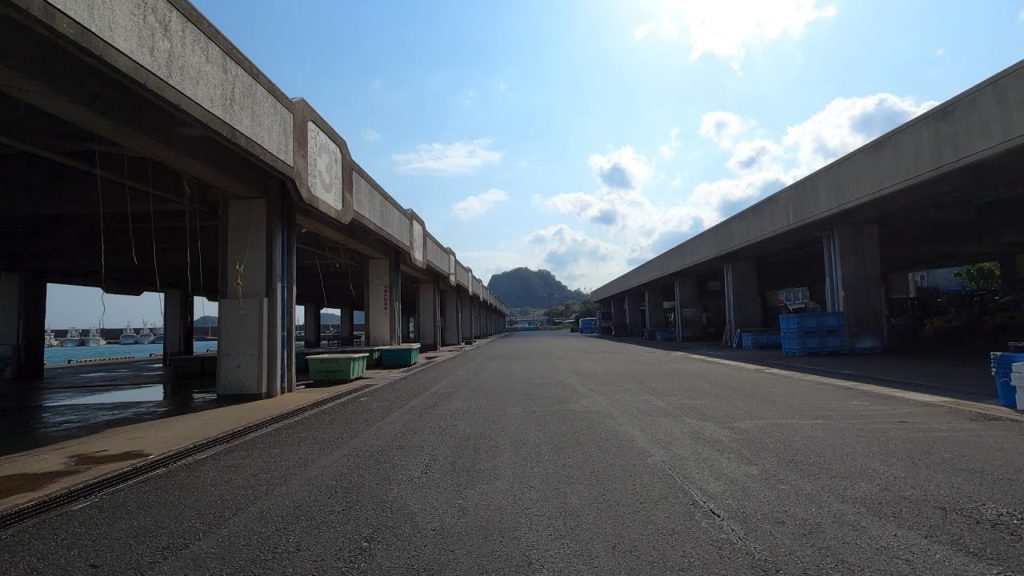Thank you for watching! We publish videos daily from Japan.
If you like our videos, please consider subscribing to our channel.
Youtube:
Twitter:
Instagram:
Youtube:
00:38 Kamogawa City
11:19 Emi, Kamogawa City
About Emi Station
Emi Station (江見駅, Emi-eki) is a railway station operated by JR East’s Uchibō Line located in Kamogawa, Chiba Prefecture, Japan. It is 111.4 kilometers from the terminus of the Uchibō Line at Soga Station.
Emi Station was opened on December 20, 1922. The station was absorbed into the JR East network upon the privatization of the Japan National Railways (JNR) on April 1, 1987.
About Chiba Pref.
From beach activities and mountainous trekking to historic villages, Disney resorts and outlet shopping, Chiba has something for all
Adjacent to Tokyo, Chiba is best known for being home to Japan’s two Disney parks, but the area overflows with natural beauty both inland and by the sea. Stretching 66 kilometers along Chiba’s coast is Kujukuri Beach, Japan’s longest stretch of sandy coastline, ideal for watersports. Deeper inland are a number of spacious parks and towering Mt. Nokogiri, with its “Hell Peek Point.” Chiba also has Japan’s main international airport, Narita, making it the country’s first entry point for most travelers.
How to Get There
Chiba is easily accessible via the JR Keiyo Line from Tokyo Station. You can also reach Chiba using the JR Sobu Line from various stations in the capital. Narita International Airport, Japan’s main international airport, is located in the prefecture.
The JR Sobu Line travels through several of Tokyo’s main stations, including Shinjuku, Tokyo and Akihabara. From Chiba Station, you can access many prefectural sights via the local train network. The Keiyo Line, which stretches around the bay, connects Tokyo to Chiba’s main urban attractions such as the Disney resorts and the Makuhari Messe exhibition center. You can use the Japan Rail Pass for JR train lines.
Wikitravel – Chiba
Chiba Prefecture (千葉県 Chiba-Ken) is located directly east of Tokyo, and bordered by Ibaraki Prefecture to the north. A large part of the prefecture is made up of the Bōsō Peninsula (房総半島 Bōsō-hantō), which shields Tokyo bay from the Pacific Ocean.
Much of the western/northwestern part of Chiba is relatively uninspired urbanity and bedtowns for Tokyo, but once you get past the city and watch the sharp descent into rural countryside of sprawling rice fields, rolling hills, and striking coastlines, you will realize why Chiba has been variously called “Edo’s Breadbasket”, “Japan’s Golf Mecca”, and “Tokyo’s Secret Backyard”. The image character of Chiba is “Chi-ba kun” which is the Chiba prefecture shaped dog.
The area is relatively poorly known, even among Japanese people, but is nonetheless a great place to get away from Tokyo and explore a Japan a bit off the beaten track.
Chiba Prefecture (千葉県 Chiba-Ken) is located directly east of Tokyo, and bordered by Ibaraki Prefecture to the north. A large part of the prefecture is made up of the Bōsō Peninsula (房総半島 Bōsō-hantō), which shields Tokyo bay from the Pacific Ocean.
Many parts of Chiba can be visited on a day trip from Tokyo. The Pacific coast is dotted with many traditional fishing villages, and young surfers from Tokyo are attracted by the waves. The inner coast is less picturesque, but the cliffs of Nokogiriyama are a popular tourist attraction.
While JR trains run the entire coast of Chiba, the inner coast is just a 30-minute ferry ride from Kurihama, south of Yokohama. 1997 saw the completion of the Tokyo Wan Aqua Line bridge and tunnel, which burrows under and rises across Tokyo Bay between Kisarazu (Chiba prefecture) and Kawasaki (on the Tokyo side). At ¥4000 for a passenger car, almost nobody uses the tunnel though, and it’s bleeding government money. You can take highway buses through the tunnel and over the bridge from Tokyo Station, Shinagawa, Haneda Airport, Kawasaki and Yokohama stations for up to ¥1500 one way to Kisarazu.
The center of the JR network in Chiba is, unsurprisingly, JR Chiba station. But be careful when taking trains to the Boso Peninsula, as there are two different ways trains can get to Awa-Kamogawa, the final stop. The Uchibō Line (内房線), or “Inner Boso Line”, follows the western coast (Tokyo Bay side) through Kisarazu, while the Sotobō or “Outer Boso” Line (外房線) cuts across the peninsula and then goes down the east coast (Pacific Ocean side) via Katsuura. Additionally, trains to Choshi can turn north at Sakura to go via Narita (the Narita Line), or go south via Naruto along the Sobu Main Line.
#StayHome and travel to Japan #WithMe
#iostoacasa


AloJapan.com